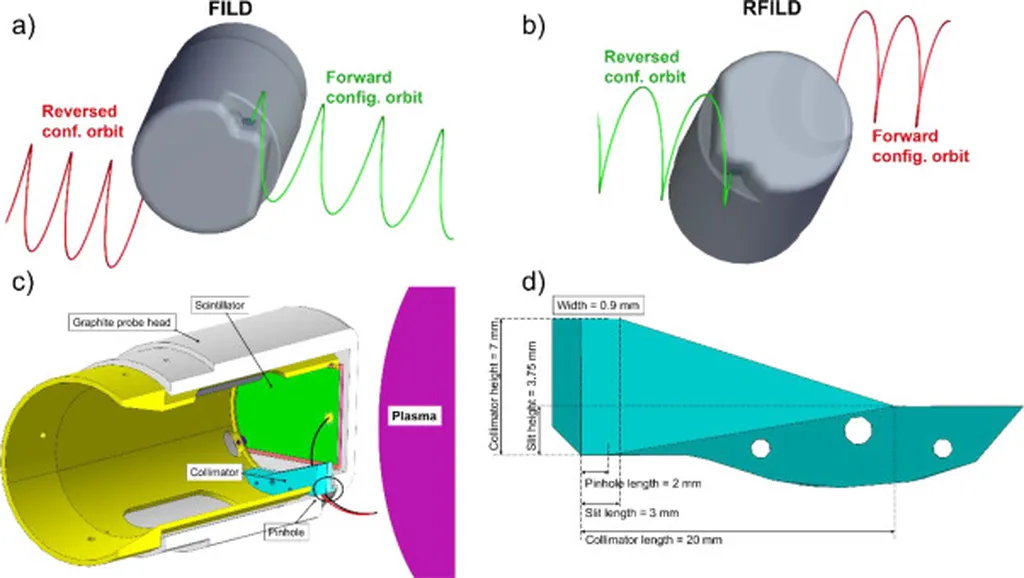In a significant stride toward understanding and harnessing fusion energy, researchers have achieved the first simultaneous observation of co- and counter-current fast-ion losses in the ASDEX Upgrade tokamak. This breakthrough, published in the journal *Nuclear Fusion* (which translates to *Fusion* in English), opens new avenues for optimizing fusion power plants and mitigating challenges posed by plasma instabilities.
Dr. A. Reyner-Viñolas, lead author of the study from the Department of Atomic, Molecular and Nuclear Physics at the University of Seville, explains, “Understanding the mechanisms responsible for fast-ion losses is critical for future magnetically confined fusion power plants.” The study leverages a novel double pinhole collimator developed for a Fast-Ion Loss Detector (FILD), enabling simultaneous measurements of co- and counter-current ion velocity-space.
The research was conducted in H-mode plasmas with an on-axis magnetic field of -2.5 T and a plasma current of 0.7 MA. The findings reveal that both co- and counter-current fast-ion losses (FILs) exhibit a similar dependence on Ion Cyclotron Resonance Heating (ICRH) power. However, the intensity of the losses differs significantly, with co-current losses being an order of magnitude larger. “The main difference is the intensity of the losses, with the co-losses being an order of magnitude larger,” Reyner-Viñolas notes.
The study identified Toroidal Alfvén eigenmode-coherent ICRH-only losses for co-current ions. Additionally, the presence of Edge Localized Modes (ELMs) during the discharge was found to increment Neutral Beam Injection prompt losses while partially mitigating ICRH-driven losses on both co- and counter- sides of the velocity-space. This dual effect of ELMs could be pivotal in managing plasma stability and optimizing energy output in future fusion reactors.
One of the most intriguing findings was the observation of very trapped and high gyroradius losses, with an unclear origin, in both co- and counter-current velocity-space. Computed ion trajectories suggest that these ions remain permanently near the vessel wall, indicating they might be accelerated within the scrape-off layer. This discovery could have profound implications for understanding and controlling plasma behavior in fusion devices.
The implications of this research extend beyond academic interest. As the world seeks sustainable and clean energy solutions, fusion power holds immense promise. The insights gained from this study could shape the design and operation of future fusion power plants, enhancing their efficiency and reliability. “This research brings us one step closer to harnessing the power of fusion,” Reyner-Viñolas states, underscoring the potential impact on the energy sector.
In summary, the simultaneous observation of co- and counter-current fast-ion losses in the ASDEX Upgrade tokamak represents a significant advancement in fusion research. The findings not only deepen our understanding of plasma physics but also pave the way for more efficient and stable fusion power plants, potentially revolutionizing the energy landscape.

